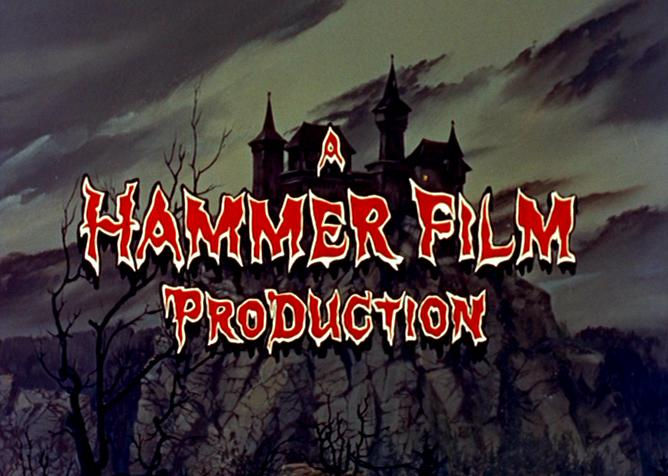
Viktoria Szelachowska
8 Feb 2025
The notion of Gothic horror has been shaped and reshaped in ways unimaginable to the mere mortal. With the new cinematic journeys into the eery unknown, it’s only right to understand who paved the road for the wheels to roll.
Hammer Studios: The Birth of British Gothic Horror
Earlier this year Nosferatu (2025) and Wolf Man (2025) set a precedent for the revival of gothic cinema. It brought back dark, traditionally foreboding landscapes with a stimulating slice of morally confounding characters. Its enduring allure has captivated audiences with its distinctive battle between unwavering beauty and unsettling darkness.
From Nosferatu to Guillermo Del Toro’s highly anticipated Frankenstein (2025), this year is set to be the year where The Gothic genre returns to take its place amongst the film stage.
Although, a large chunk of contemporary Gothic films have been American, they owe not only their success, but also their existence, to Britain. Through the Gothic’s birth in British literature, the cultural impact of Gothic Cinema has been made possible by none other than the legendary Hammer Studios.
From its conception in 1934, Hammer studios took the film world by storm with its resurrection of the traditional Gothic genre. It brought to life seminal works of gothic literature such as Frankenstein, and Dr Jekyll and Mr Hyde, influencing future Horror films.
Their iconic augmentation of classic characters pushed the boundaries of visual adaptations. It created a distinct separation between how readers and audiences were experiencing and visualising these characters.
During the 1930s when film was still a fairly new medium, Hammer experimented and pushed its capabilities in ways that shifted the prevailing comprehension of film.
Groundbreaking Visual Style: The Use of Technicolor and Realism
The 1950s is where Hammer really flourished, their transgressive and distinctive use of colour sensationalised the genre. Audiences experienced a sense of realism never seen before.
Crimson red, spine chilling blue and radioactive green were essential to their distinctive visual style. It not only made Hammer distinguishable amongst its competitors but also added a layer of beguiling abnormality that hypnotised audiences.
Hammer’s utilization of such a vivid spectrum of colours became synonymous with experimental horror, inspiring cult classics such as Rosemary’s Baby (1968) and The Exorcist (1973).
Prior to Hammer’s injection of technicolour into their horror films, colour was solely reserved for fantasy. The use of monochrome was expected of horror productions as it helped remove the grotesque nature of the genre.
Hammer subverted this expectation and in The Curse of Frankenstein (1957) showed for the first time in history, a gory bright red depiction of blood, creating an uncanny sense of realism that both thrilled and terrified.
Pushing Boundaries: Sensuality, Violence, and Social Norms
Hammer studios continued to push boundaries through their audacious narrative choices, the daring blend of sensuality and violence created a provocative yet titillating viewing experience.
Operating at a time of strict media censorship and rigid social expectations, Hammer studios instituted a shift in social norms through their exploration of liberation and repression.
Sexuality was vividly showcased on screen through strikingly sensual wardrobe choices, carnal body language and promiscuous dialogue. Although heavily criticised at the time, it instituted a new age of expressionism that influenced an aspiring era of Avant Garde horror filmmaking.
Hammer studios continued their transgression of societal boundaries through their progressive use of women. Hammer horror showed women as strong, capable, and complex characters that were able to navigate ideas of autonomy, power and lust.
Reimagining the Femme Fatale: Strong, Dangerous Women in Horror
Through films such as Countess Dracula (1971) and The Vampire Lovers (1970) Hammer also reinvented the ideas surrounding The Femme Fatale. The Femme Fatale is an archetype of Gothic horror, an unexpected female character that is as strikingly beautiful and seductive as she is dangerous. She was the source of peril throughout the film, subverting the expectation of women needing saving from danger and making them the source of it.
As a classic marker of Gothic literature, women were far more than just the quintessential heroine in distress, they disturbed the status quo. In Hammer horror women not only held a sense of power but also danger, contributing to a level of depth and reinvention to the classic female portrayal in horror.
Hammer's Lasting Influence on Modern Gothic Horror
The legacy and reverence of Hammer Studios echoes through the history of Horror. For decades, they paved the way of boundary defying cinematic experimentation, creating a space in which filmmakers create without being by rigid expectations of could underpinned the genre.
Gothic Horror was pioneered by Hammer, however contemporary directors such as Robert Eggers, Tim Burton and Guillermo del Toro, are putting a new age spin of the gothic genre.
Although, they noted to have been immensely influenced by Hammer, their modern twist on the Gothic genre takes a subtler form. The carefully crafted air of psychological terror is a replacement for the awe-striking gore, the audiences are left with tales shrouded in metaphorical lore.